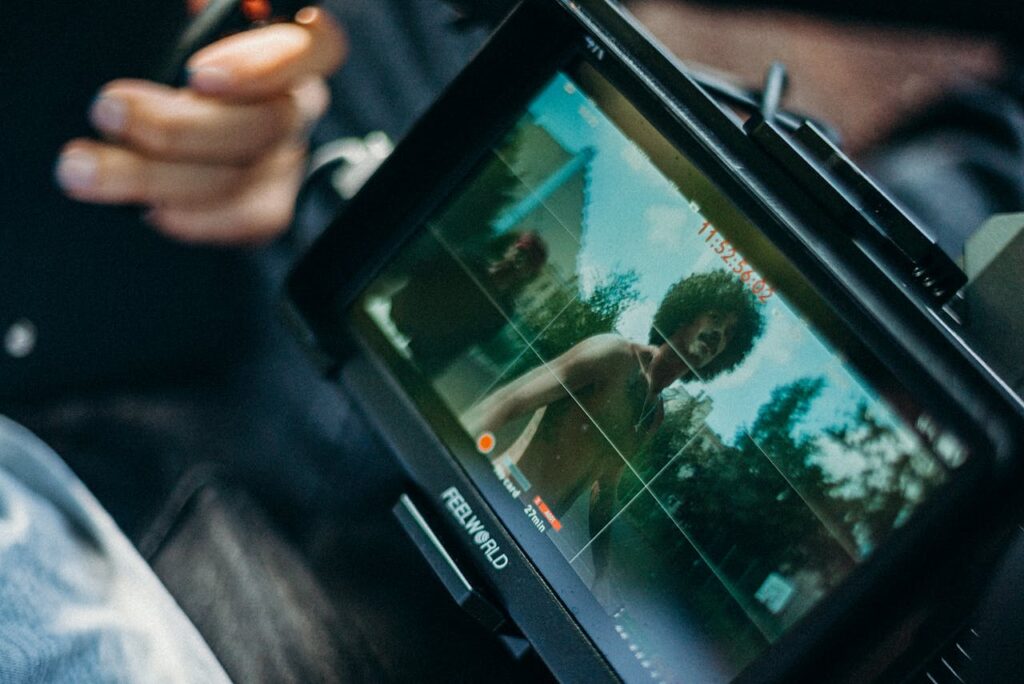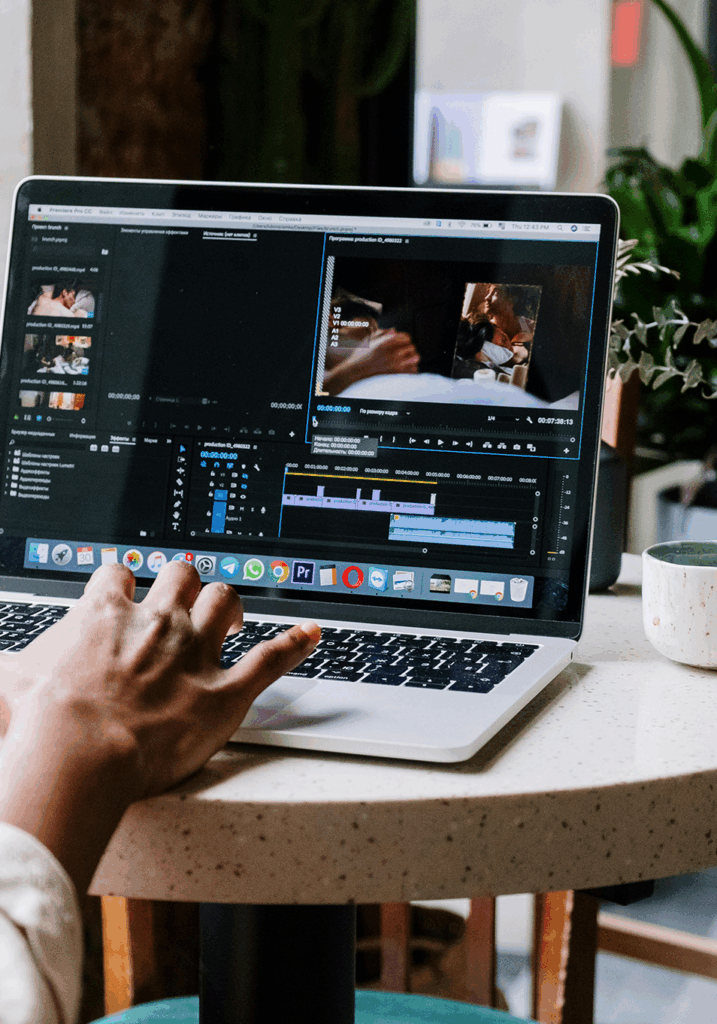Why music matters in Film & TV?
Music is far more than background noise, it’s a storyteller. The right song can amplify emotion, define a character, or elevate a scene from good to unforgettable. From indie dramas to high-octane thrillers, music shapes the emotional and narrative arc of every film or series.
But behind every perfectly timed track lies a meticulous process of music supervision and licensing. Whether it’s syncing a chart-topping hit or curating a moody score, music supervisors play a crucial role in shaping the sonic identity of a project. This entry level guide unpacks everything you need to know about music supervision and licensing for film and TV, from its creative process to the legal logistics, so you can make informed, confident choices on your next project.
What Is Music Supervision?
Music supervision explained: Music supervision is the process of selecting, negotiating, and licensing music for visual media. It blends creative storytelling with legal and logistical know-how.
A music supervisor works closely with directors, producers, and editors to source music that fits the tone and pacing of a project. On the creative side, they help find the perfect track to underscore a moment. On the legal side, they navigate rights, licenses, and clearances to make sure everything’s above board.
Key Responsibilities:
- Curating songs that align with a scene’s emotion
- Clearing rights with artists, labels, and publishers
- Budgeting and negotiating sync fees
- Overseeing soundtrack releases,
- Delivering song credits and cue sheets
They are the bridge between the story and the soundtrack and their decisions can make or break a scene.

What is Sync Licensing?
Sync licensing, short for synchronization licensing, is the process of obtaining permission to use music in timed relation to visual media. Whether it’s a Netflix original, a film festival production, or an Instagram post, if there’s music, it needs to be licensed.
Two Types of Rights:
- Master Rights – Owned by the artist or label (the recording itself)
- Publishing Rights – Owned by the songwriter or publisher (the composition)
To license a song, you must clear both. That’s why sync licensing for TV shows and films can be complex, especially if multiple rights holders are involved.
(Need to know how to license music for film? Keep reading!)
“Whether it's a Netflix original, a film festival production, or an Instagram post, if there’s music involved, it needs to be licensed.”
How to License Music for Film & TV: Step-by-Step
The film music licensing process can be broken down into these key stages:
1. Choosing the Right Track
Start with getting to know the story and mood. Consider its tone, the rhythm, the lyrics, and the suitable genres. Music supervisors often provide shortlists based on creative briefs.
2. Identifying the Rights Holders
Who owns the master and publishing rights? Sometimes it’s straightforward. Other times, it involves multiple writers, publishers, and labels. You can research this information on websites like PRS.
3. Negotiating the Sync Deal
Fees vary widely depending on an array of factors, from the artist’s size to the usage, territory, duration, and type of media. A music supervision agency can help secure favorable rates and efficiently manage your production’s budget.
4. Handling Music Clearance
This is where things can get tricky. You’ll need written approval (aka “sync license agreement”) from all the rights holders. This step is essential to avoid any legal risk.
5. Finalising the Legal Agreements
Secure all contracts, cue sheets, and proof of licensing. For TV, this often includes delivery of metadata, audio files and all the finalized licensing documentation.
Tips for Choosing the Right Music for Your Scene
Soundtrack curation for film is both an art and a strategy. Here’s how to do it right:
- Match Emotion & Pacing: Music should uplift the story, not distract from it.
- Consider Lyrics Carefully: Instrumentals often give more room for dialogue and mood.
- Work With a Music Supervisor: Their expertise can save time, money, and legal headaches.
Custom vs. Licensed Tracks: Custom compositions can be cost-effective and unique, but licensing popular songs in film adds instant recognition (if your budget allows it). We recommend combining both for the most effective results, however each project will demand a different approach to this. Every scene deserves the right sonic fingerprint!

Common Mistakes to Avoid
Avoiding these pitfalls ensures smoother production and protects your project from legal risks:
- Not budgeting for music early
Licensing music after edit-lock can lead to costly changes or creative compromises. Especially if you used a song during the filming of a scene, you’ll need approval from all rights holders beforehand or that scene could potentially end up being discarded from your production. - Assuming you can use a track without clearance
Even if it’s just a few seconds — no rights, no play. - Confusing sync with performance rights
Sync licenses cover the use of music in visual media. Public performance rights (e.g. for broadcast) are handled separately, often by PROs.
How Record Play Supports Film & TV Projects
At Record Play, we specialise in music supervision and licensing for film and TV, combining over 20+ years of experience and creative insight with rock-solid licensing know-how.
Our Services include:
- Creative music research and curation
- Rights clearance and sync negotiations
- Custom score development
- Full soundtrack supervision and delivery
- Legal support and execution
Case Studies
Red Flags (Atresplayer) — Record Play supervised and licensed around 60 songs, with a strong focus on independent, queer, and underground artists from around the world. It’s a soundtrack that amplifies emotion, identity, and connection – from experimental electronica and underground club tracks to hyperpop, alt pop, and post-punk energy.
Fanático (Netflix) — From drill and reggaeton to house, indie rock, hip hop, and more, the show’s soundtrack represents the sound of youth culture in Spain today. International voices also feature across the series, with standout tracks from artists in Argentina and the UK, adding extra edge and global flair.
Los Aitas — Borja Cobeaga’s 80s inspired film is a heartfelt and hilariously sharp look at fatherhood and friendship. We handled the music supervision, helping to underscore the film’s nostalgic yet contemporary tone with one iconic track: Technotronic’s “Pump Up The Jam.”
Want to know more about music copyright and the world of licensing?
Take a look at Unblocking The Sync: A band’s guide to brands, and a brand’s guide to bands.
If you feel like you need some guidance through the complex world of music licensing, this e-book is designed for you.




